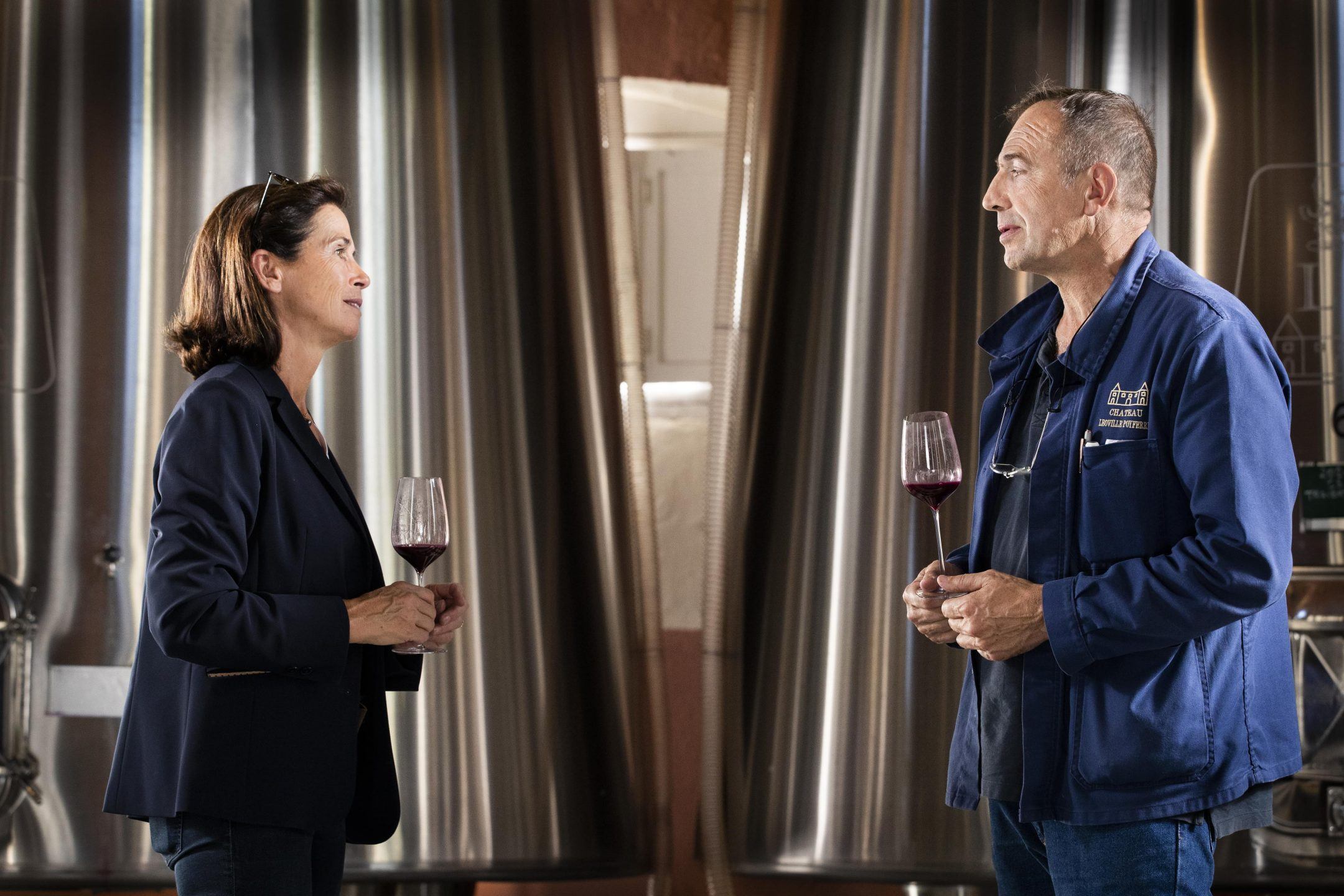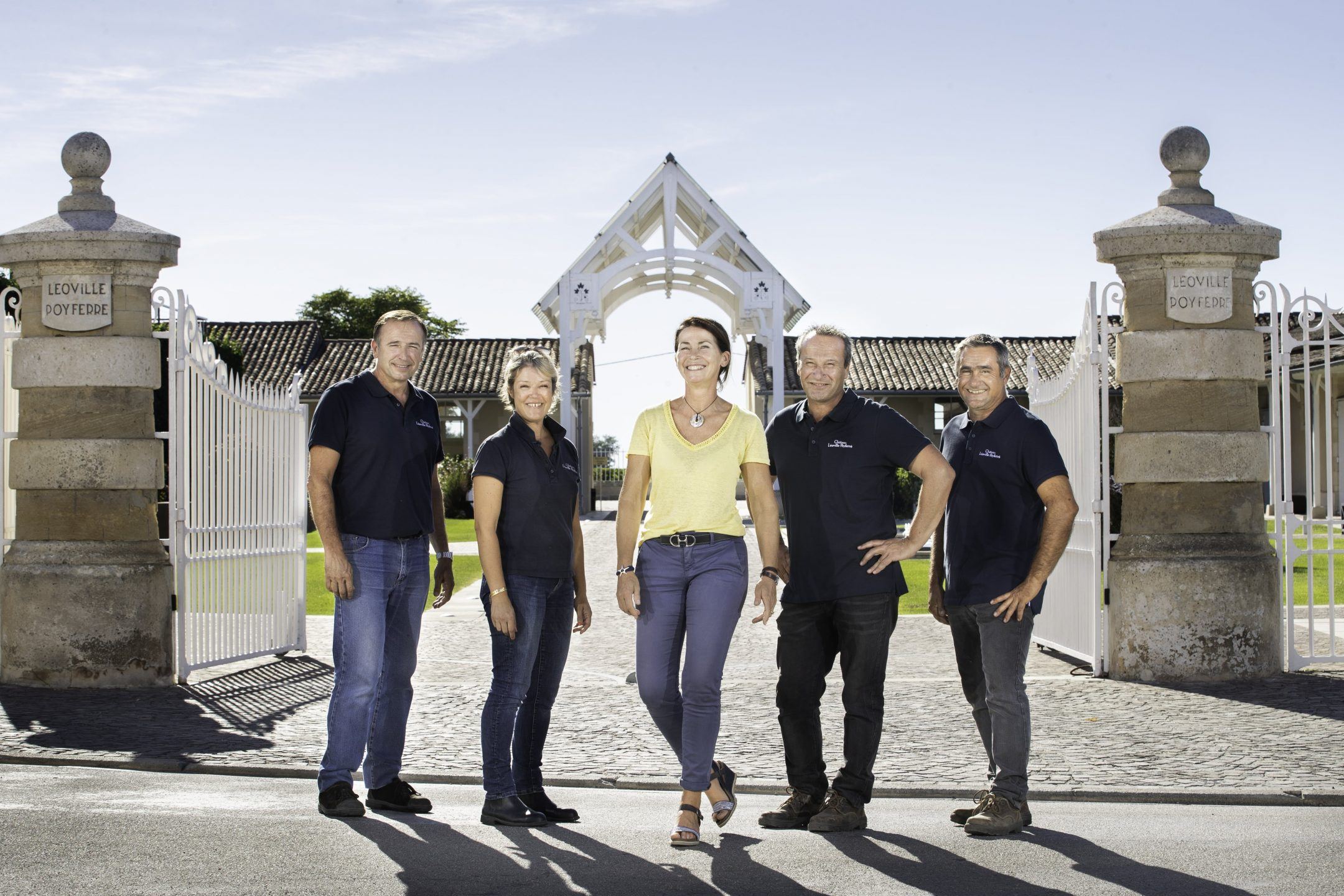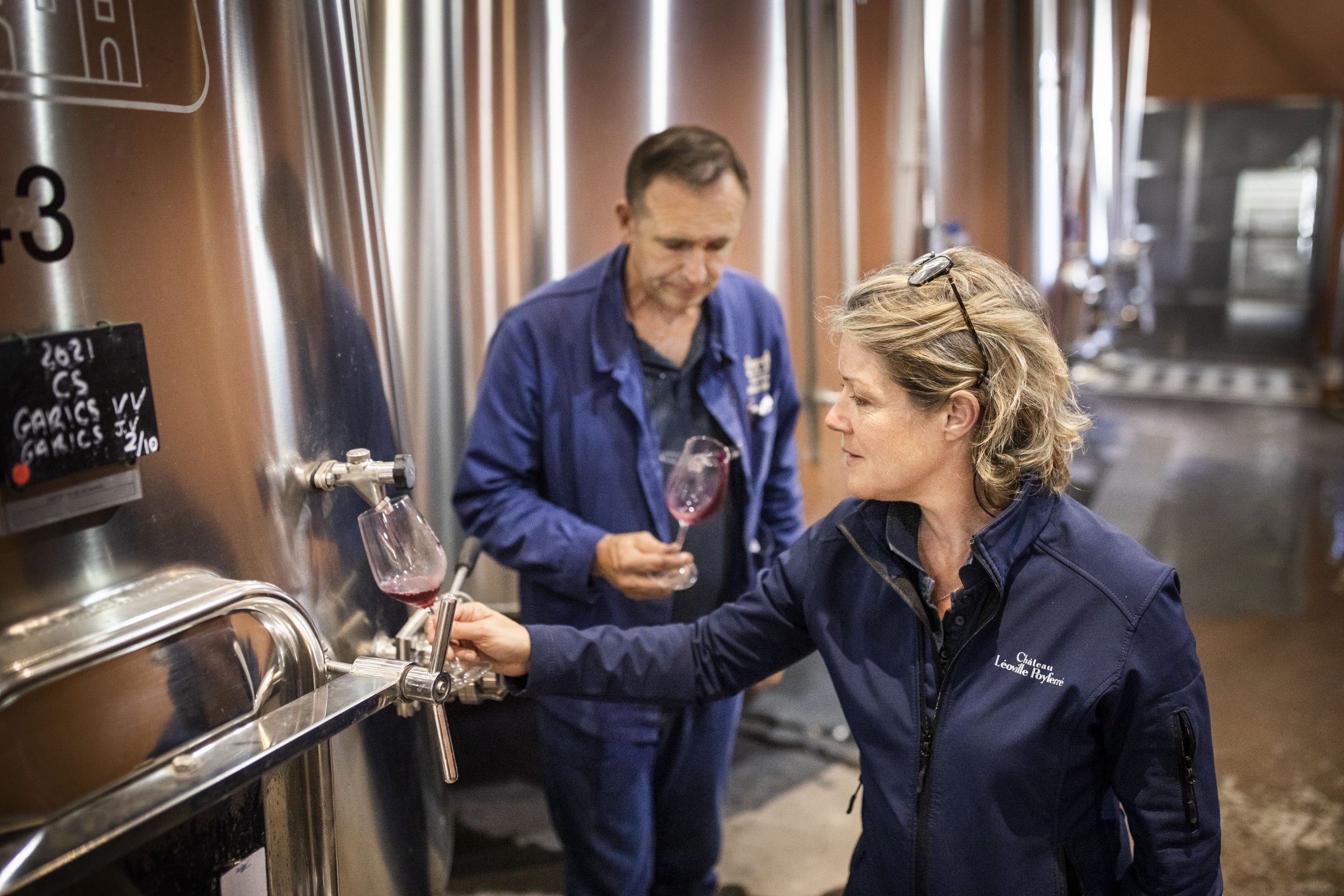VINTAGE NOTES
A fascinating tasting covered a mini-vertical from 2019 back to 2014, as well as 2008, 2005 and 2003 (see p58, with all tasting notes available in full on decanter.com/premium). ‘The 2015 is emblematic of us and the appellation, while 2016 is the same quality as ’18, ’19 and ’20,’ Sara says, with Thomann adding: ‘The 2018 is exuberant and rich, like 2010, while 2008 needs food to complete the experience.’
When asked their favourite vintages, Sara alights on 2011, referring to it as a ‘magnifique vintage’ that wasn’t well received at the time but now outperforms 2012 in terms of consumer preference, and as such commands higher prices. For me, a highlight of the tasting was 2005, and yet Davin laments that if they had only had the technology and equipment they have now, the quality could have been even better.
All of the wines display energy and power alongside elegance and class – indeed the latter two were words I wrote on the whiteboard wall of their tasting room before ending my visit. Detail, precision, concentration and finesse, each expressed through the conditions of the vintage.
A TASTE OF THE FUTURE
Since arriving, Sara has concentrated efforts into marketing and communication, social media and tourism – prior to Covid, the estate welcomed up to 7,000 visitors annually. ‘We want to be accessible,’ she says. Also offered are international shipping services for exclusive back-vintages available only at the château.
New labels have been designed in order to better distinguish the grand vin and second wines of both Léoville Poyferré and Moulin Riche, and celebrations to mark 100 years of family ownership – put on hold due to Covid – will take place in several cities around the world later this year.
Sara’s goal to raise the estate’s reputation seems to be on track. As Matthew O’Connell, CEO of LiveTrade and head of investment at Bordeaux Index, says: ‘It’s a well-followed, top-25 château, and demand has been pretty strong – trading on our LiveTrade online platform was up around 40% in 2021.’
O’Connell adds: ‘We have a view that Léoville Poyferré outperforms in tougher vintages, for instance 2002, 2004, 2007. But buyer interest tends to be focused on the best vintages, so last year our most active trading was in 2016 and 2018, as well as 2009 and 2010.’
‘Some people call us une belle en dormis (‘a sleeping beauty’), because we’re not so known,’ says Sara. ‘All the classified estates are working to strengthen their brands and we must do the same. We take nothing for granted – you have to prove yourself.’ Judging by the quality of the 2018, 2019, 2020 vintages, and the excellent 2021, the team at Léoville Poyferré are certainly doing that.



